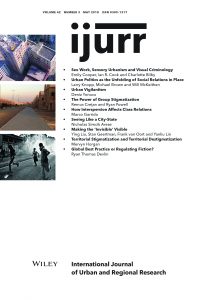Recent research on Roma stigmatization has tended to focus on the marginal socio‐economic and spatial position of Roma people within European societies, with poverty, persistent inequalities and substandard housing conditions (for example, ghettoization) highlighting their differential treatment. Central to such accounts are group images and stereotypes of Roma as ‘benefit scroungers’ and/or ‘beggars’ lacking notions of self‐restraint and social responsibility. This body of research is hugely important in terms of its contribution to an understanding of the complex dynamics of marginalization and stigmatization of poor Roma households. Yet not all Roma are characterized by poverty and economic hardship. This article explores the neglected experiences of wealthy Roma within urban spaces in Romania. It draws on empirical evidence from interviews with Roma families, leaders and local authorities. Our analysis exposes the way in which Roma are vehemently stigmatized regardless of their economic position or housing circumstances and highlights deep underlying sentiments towards them within Romanian society. We critique Wacquant’s concept of territorial stigmatization by applying it to wealthy groups outwith typical areas of relegation (for example, Roma ghettos) within the specific urban context of post‐socialist Romania. While our analysis points to the internalization of stigma, we also identify distinct defensive strategies wealthy Roma employ to counter and avoid stigmatization. We suggest that a focus on the neglected spaces of wealthy Roma groups can facilitate a more comprehensive understanding of the distinct urban power relations that shape Roma stigmatization, reveal how this long‐term process has recently been accentuated within Europe alongside a more overt populist and anti‐Roma political agenda, and contribute to the development and refinement of Wacquant’s thesis.
Details
Written by:
Remus Creţan & Ryan Powell
Digital Object Identifier (DOI)
10.1111/1468-2427.12626
About DOI

